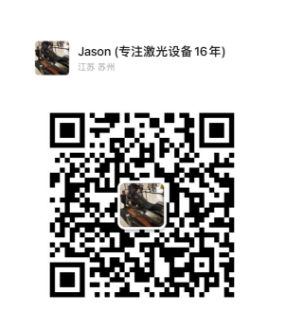A. Current Market Size and Growth Trends
Market Size
The laser rust removal market has shown a steady growth trend over the past few years. According to market research reports, the estimated size of the global laser rust removal market in 2023 has reached hundreds of millions of dollars, and is expected to exceed $1.5 billion by 2028. The development of this market is mainly driven by the increasing demand for industrial automation and clean technology.
Growth Trend
The average annual growth rate of the laser rust removal market is expected to remain between 6% and 10% from 2023 to 2028, thanks to the advancement of laser technology, the promotion of environmental protection policies, and the increase in demand for efficient rust removal.
Technological progress: The continuous advancement of laser technology has continuously expanded the efficiency and application scope of rust removal, such as the emergence of miniaturized and portable equipment, which enables more companies to flexibly use laser rust removal technology.
Policy promotion: Governments have strengthened environmental protection regulations, which has restricted chemical rust removal methods. Laser rust removal, as a pollution-free method, is favored by more and more companies.
B. Industry demand analysis
Heavy industry
Application areas: Heavy industries such as steel, shipbuilding and mining have an urgent need for rust removal. The rust problem of large equipment and structures in long-term use needs to be solved urgently, and laser rust removal provides an efficient and environmentally friendly solution.
Demand characteristics: Heavy industrial enterprises have high requirements for the frequency and quality of equipment maintenance. The use of laser rust removal can not only extend the service life of equipment, but also improve safety and reduce downtime losses.
Manufacturing
Application areas: In the fields of aerospace, automobile manufacturing and electromechanical equipment manufacturing, laser rust removal is used to clean parts to ensure product quality and processing accuracy. High value-added products have more stringent requirements for surface treatment.
Demand characteristics: With the pursuit of automation and intelligence in the manufacturing industry, laser rust removal equipment has gradually been integrated into the production line to improve production efficiency and meet the needs of small-batch diversified production.
Construction and infrastructure
Application areas: In the maintenance and repair of bridges and historical buildings, laser rust removal technology can effectively remove rust without damaging the structure and ensure construction safety.
Demand characteristics: Environmental protection requirements and the emphasis on the protection of historical buildings have driven the application of the laser rust removal market in the construction industry.
Energy industry
Application areas: In the power, oil and gas industries, equipment maintenance and overhaul are frequent, and laser rust removal can improve equipment efficiency and reduce failure rates.
Demand characteristics: With the emphasis on renewable energy, laser rust removal will also play an important role in the maintenance of wind power and other renewable energy equipment.
C. Returns on investment in laser rust removal by enterprises
Cost-effectiveness:
Although the initial investment is high, the high efficiency of laser rust removal greatly shortens the cleaning time, thereby reducing labor costs and saving subsequent materials and maintenance costs.
Improved product quality:
Laser rust removal can ensure high precision and quality of the surface of parts, reduce defect rates, improve the market competitiveness of products, and bring considerable benefits in the long run.
Environmental advantages:
Laser rust removal does not produce chemical waste, complies with environmental regulations, helps companies improve their green image, and reduces environmental penalties and processing costs.
Extended equipment life:
The application of laser rust removal technology helps to extend the service life of equipment, reduce replacement frequency and related costs, and bring long-term economic benefits to enterprises.
Market adaptability:
With the diversification of market demand, enterprises can respond to the needs of different customers more flexibly, realize customized services through laser rust removal technology, and drive additional revenue growth.
Laser rust removal has a wide range of market demands, covering multiple industries, and the market size is showing a growing trend. Enterprises investing in laser rust removal technology can not only obtain good economic returns, but also enhance their competitive advantages, which is in line with the future direction of environmental protection and sustainable development. In this production environment where efficiency and cleanliness are increasingly valued, laser rust removal technology will play an increasingly important role. Click here to contact Suntop Laser immediately to recommend a suitable laser rust removal machine for you.









































